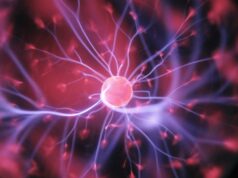
A study evaluating different waveforms within a wireless spinal cord stimulator (SCS) device (Stimwave) has found high response rates for patients receiving both high and low frequency waveforms. These data from the SURF trial were presented by Robert Bolash of Cleveland Clinic (Cleveland, USA) at the International Neuromodulation Society (INS) 14th World Congress (25–30 May, Sydney, Australia).
Specifically, the Visual Analogue Scale (VAS) indicated that sustainable pain reduction was achieved in 77% of patients in the high frequency arm, and 64% in the low frequency arm at the six-month endpoint. According to Bolash, these results “met or exceeded those of previously reported randomised controlled trials (RCTs) with implantable pulse generators (IPGs)”. Moreover, he reported that 92% of patients receiving high frequency stimulation achieved the primary endpoint of a 50% reduction in pain; achieved by 82% of the patient population in the low frequency group.
The SURF RCT study, a prospective, randomised, multicentre clinical trial was the first ever pivotal study conducted utilising a wirelessly powered SCS system comparing a variety of waveform options without a separate trialling device. According to Bolash, the study participants were able to optimise their pain relief outcomes and dial in the appropriate waveform and frequency customised to their unique pain relief needs.
The study enrolled 99 patients (mean age: 58) at seven centres in the USA. The high frequency patients received 10kHz SCS and the lower frequency patients received a number of different waveforms. Inclusion criteria required patients to have predominantly back and/or back and leg pain associated with post-laminectomy syndrome, for at least 12 months. However, patients who had had previous SCS in the past were excluded, including devices that had be explanted. “These really were de novo patients, who had never been exposed to SCS. And, we did exclude patients who would require MRI during the period of the study, although the device does carry MRI conditionality,” Bolash explained.
“The wireless cord stimulator device used in this trial has very similar characteristics to a lead that you would place with a conventional spinal cord stimulator. The interesting thing is that the miniaturised computer circuit board, which would typically be placed in the implantable pulse generator, has been miniaturised, and placed within the lead itself,” Bolash said, and suggested that, “This is the brains behind the spinal cord stimulator for this particular device.”
He further highlighted that the device does not require the patient to have an implantable pulse generator. “Therefore, what is absent in the study, is the placement of a percutaneous lead, the removal of a percutaneous lead a week or two weeks later, and then returning to the procedure room to place a permanent device. With this device you can place the device all in one step.”
Thus, Bolash reported that after an initial 30-day trial period with the permanent implanted device, and throughout a six-month follow-up, treated patients experienced statistically significant improvement in VAS scores in both arms of the study.
Concluding the study, he highlighted that the investigators observed a significant reduction in disability, meaning that patients were able to go out, enjoy certain activities and spend time with their families. “This was much more reassuring to me than seeing some of the data that are more objective,” Bolash emphasised. Finally, he alluded to the high patient satisfaction rate they experienced with the device, and noted that patients were “certainly satisfied with the analgesia they received and their ability to avoid an implantable battery.”













